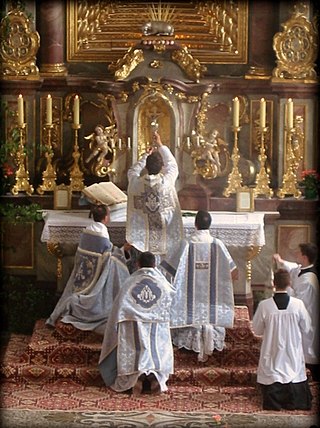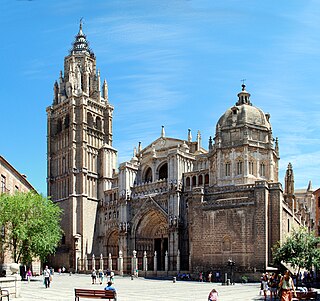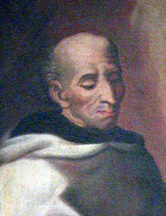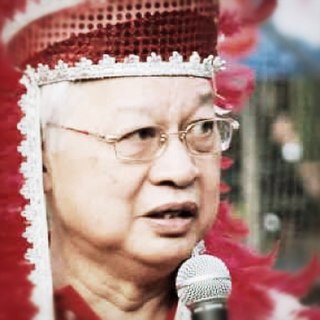
The Tridentine Mass, also known as the Traditional Latin Mass or the Traditional Rite, is the liturgy in the Roman Missal of the Catholic Church published from 1570 to 1962. Celebrated almost exclusively in Ecclesiastical Latin, it was the most widely used Eucharistic liturgy in the world from its issuance in 1570 until the introduction of the Mass of Paul VI.

The Mozarabic Rite, officially called the Hispanic Rite, and in the past also called the Visigothic Rite, is a liturgical rite of the Latin Church once used generally in the Iberian Peninsula (Hispania), in what is now Spain and Portugal. While the liturgy is often called 'Mozarabic' after the Christian communities that lived under Muslim rulers in Al-Andalus that preserved its use, the rite itself developed before and during the Visigothic period. After experiencing a period of decline during the Reconquista, when it was superseded by the Roman Rite in the Christian states of Iberia as part of a wider programme of liturgical standardization within the Catholic Church, efforts were taken in the 16th century to revive the rite and ensure its continued presence in the city of Toledo, where it is still celebrated today. It is also celebrated on a more widespread basis throughout Spain and, by special dispensation, in other countries, though only on special occasions.

The Barnabites, officially named as the Clerics Regular of Saint Paul, are a religious order of clerics regular founded in 1530 in the Catholic Church. They are associated with the Angelic Sisters of St. Paul and the members of the Barnabite lay movement.

Sant'Andrea della Valle is a minor basilica in the rione of Sant'Eustachio of the city of Rome, Italy. The basilica is the general seat for the religious order of the Theatines. It is located at Piazza Vidoni, at the intersection of Corso Vittorio Emanuele and Corso Rinascimento.

The Theatines, officially named the Congregation of Clerics Regular, is a Catholic order of clerics regular of pontifical right for men founded by Archbishop Gian Pietro Carafa on 14 September 1524.

San Martino ai Monti, officially known as Santi Silvestro e Martino ai Monti, is a minor basilica in Rome, Italy, in the Rione Monti neighbourhood. It is located near the edge of the Parco del Colle Oppio, near the corner of Via Equizia and Viale del Monte Oppio, about five to six blocks south of Santa Maria Maggiore.

Annibale Bugnini was a Catholic prelate. Ordained in 1936 and named archbishop in 1972, he was secretary of the commission that worked on the reform of the Roman Rite that followed the Second Vatican Council. Both critics and proponents of the changes made to the Mass, the Liturgy of the hours and other liturgical practices before and after Vatican II consider him a dominant force in these efforts. He held several other posts in the Roman Curia and ended his career as papal nuncio to Iran, where he acted as an intermediary during the Iran hostage crisis of 1979 to 1981.
Giuseppe Catalani (1698-1764), also known as Catalano or Catalanus, was a Roman Catholic liturgist of the eighteenth century, a member of the Hieronymite Oratory of San Girolamo della Carità.
The Office for the Liturgical Celebrations of the Supreme Pontiff is that section of the Roman Curia responsible for organizing and conducting liturgies and other religious ceremonies performed by the pope of the Catholic Church. It is headed by a "master" appointed for a term of five years.

Arcadio María Larraona Saralegui, C.M.F. was a Spanish cardinal of the Catholic Church. He served as prefect of the Sacred Congregation of Rites from 1962 to 1968, and was elevated to the cardinalate in 1959.
Summorum Pontificum is an apostolic letter of Pope Benedict XVI, issued in July 2007. This letter specifies the circumstances in which priests of the Latin Church could celebrate Mass according to what Benedict XVI called the "Missal promulgated by Blessed John XXIII in 1962" and administer most of the sacraments in the form used before the liturgical reforms that followed the Second Vatican Council.

Station days were days of fasting in the early Christian Church, associated with a procession to certain prescribed churches in Rome, where the Mass and Vespers would be celebrated to mark important days of the liturgical year. Although other cities also had similar practices, and the fasting is no longer prescribed, the Roman churches associated with the various station days are still the object of pilgrimage and ritual, especially in the season of Lent.

Guido Marini is an Italian prelate of the Catholic Church who serves as the bishop of Tortona in northern Italy. A priest since 1989, from 2007 to 2021 he was Master of Pontifical Liturgical Ceremonies, serving under Pope Benedict XVI and Pope Francis. Before joining the papal household, Marini worked in the Archdiocese of Genoa, where he was the personal secretary to three archbishops from 1988 to 2003, chief liturgist from 2004 to 2007, and chancellor from 2005 to 2007.

Angelo Paoli – born Francesco – was an Italian Roman Catholic priest and a professed member from the Carmelites. Paoli became known as the "father of the poor" due to his strong charitable outreach towards those who were poor and sick, for which he received praise from a number of cardinals and other prelates while living in Rome. This extended to his friend Cardinal Giuseppe Maria Tomasi and to popes Innocent XII and Clement XI who both offered him the cardinalate, which he refused.

Giuseppe Maria Capece Zurlo, Theat. was an Italian cardinal who served as Archbishop of Naples.

Dom Anscar Chupungco, O.S.B., STD was a Filipino Benedictine monk, who was a noted liturgist, theologian and a mentor to all Filipino liturgists and countless students of the Pontifical Atheneum of St. Anselm in Rome and San Beda University in Manila. He was known for integrating local customs and traditions into the Catholic Mass.

Domenico Bartolucci was an Italian cardinal of the Catholic Church. He was the former director of the Sistine Chapel Choir and the Accademia Nazionale di Santa Cecilia, and was recognized in the field of music both as a director and a prolific composer. Considered among the most authoritative interpreters of Giovanni Pierluigi da Palestrina, Bartolucci led the Sistine Chapel Choir in performances worldwide, and also directed numerous concerts with the Choir of the Academy of Santa Cecilia, including a tour of the former Soviet Union.

Konrad Krajewski is a Polish cardinal of the Catholic Church. He was a papal master of ceremonies from 1998 to 2013. In 2013 he was appointed as the papal almoner.
Magnum principium is an apostolic letter issued by Pope Francis and dated 3 September 2017 on his own authority. It modified the 1983 Code of Canon Law to shift responsibility and authority for translations of liturgical texts into modern languages to national and regional conferences of bishops and restrict the role of the Congregation for Divine Worship and the Discipline of the Sacraments (CDW). It was made public on 9 September 2017 and its effective date was 1 October of the same year.
Alcide Giuseppe Marina, C.M. was an Italian prelate of the Catholic Church who worked as an educator and superior of the Vincentians until 1936 and then in the diplomatic service of the Holy See.















